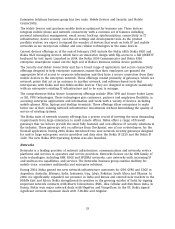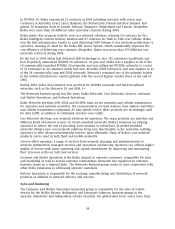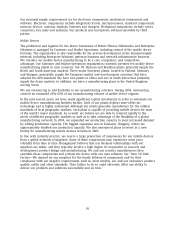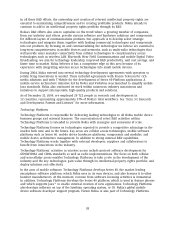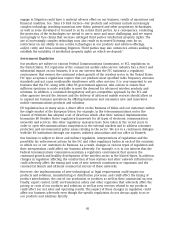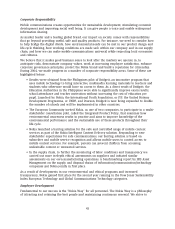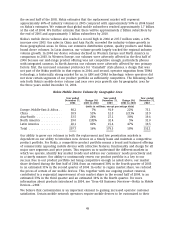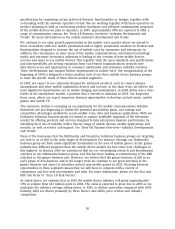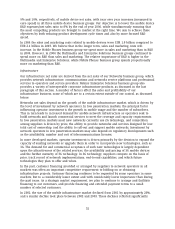Nokia 2004 Annual Report Download - page 44
Download and view the complete annual report
Please find page 44 of the 2004 Nokia annual report below. You can navigate through the pages in the report by either clicking on the pages listed below, or by using the keyword search tool below to find specific information within the annual report.Corporate Responsibility
Mobile communications creates opportunities for sustainable development, stimulating economic
development and improving social well being. It can give people a voice and enable widespread
information sharing.
As market leader and a leading global brand, our impact on society comes with responsibilities
that go beyond providing useful, safe and quality products. For instance, we need to consider how
to help bridge the digital divide, how environmental needs can be met in our product design and
life-cycle thinking, how working conditions are made safe within our company and in our supply
chain, and how we can make mobile communications universal while respecting local economies
and cultures.
We believe that it makes good business sense to look after the markets we operate in, to
anticipate risks, demonstrate company values, work at increasing employee satisfaction, enhance
corporate governance principles, protect the Nokia brand and build a reputation for citizenship.
During 2004, we made progress in a number of corporate responsibility areas. Some of these are
highlighted below.
• Results were obtained from the Philippines pilot of Bridgeit, an innovative program that
uses mobile technology to bring interactive, multimedia learning materials to teachers and
students who otherwise would have no access to them. As a direct result of Bridgeit, the
Education Authorities in the Philippines were able to significantly improve exam results,
school attendance and teacher motivation without increasing the cost of education per
pupil. Launched by Nokia, the International Youth Foundation, or IYF, the United Nations
Development Programme, or UNDP, and Pearson, Bridgeit is now being expanded to double
the number of schools and will be implemented in other countries.
• The European Community invited Nokia, as one of two companies, to participate in a multi-
stakeholder consultation pilot, called the Integrated Product Policy, that examines how
environmental awareness works in practice and aims to improve knowledge of the
environmental performance and the sustainable use of these products throughout their
life-cycle.
• Nokia launched a barring solution for the safe and controlled usage of mobile content
services as part of the Nokia Intelligent Content Delivery solution. Responding to new
stakeholder expectations for safe communications, our barring solution is based on
subscriber and mobile service recognition and allows mobile users to control access to
mobile content services. For example, parents can prevent children from accessing
undesirable content or unwanted services.
• In the supply chain, to further the monitoring of labor conditions and transparency we
carried out more in-depth ethical assessments on suppliers and initiated similar
assessments on our own manufacturing operations. A benchmarking report by ISIS Asset
Management on the supply and disposal chains of information/communication/technology
companies put Nokia jointly in first place.
As a result of developments in our environmental and ethical programs and increased
transparency, Nokia gained first place for the second year running in the Dow Jones Sustainability
Index European Technology and Global Communications Technology categories.
Employee Development
Fundamental to our success is the ‘‘Nokia Way’’ for all personnel. The Nokia Way is a philosophy
of attracting and retaining the best people and maintaining continuous renewal. We strive to
43


